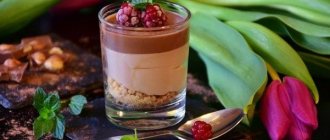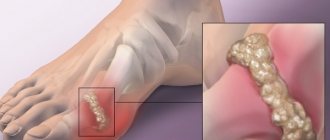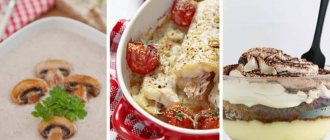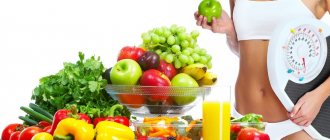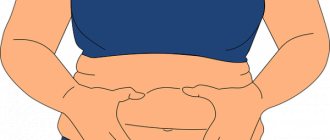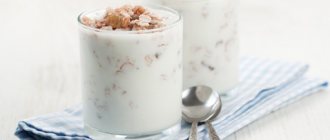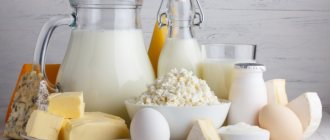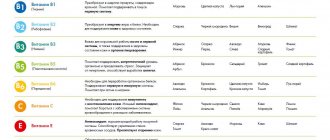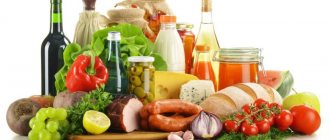Normal bowel function is very important for a child's health. If for some reason there are malfunctions in it, this immediately affects the general condition of the baby. With constipation, processed products do not leave the body, but are absorbed into the blood and poison it. Constipation not only causes discomfort, but also contributes to the development of many diseases. The best way to combat the problem is to resort to a special diet.
Dietary table No. 3: indications for use for children
Diet 3 is prescribed to children with chronic constipation, which means the absence of bowel movements for 3 days. The process of emptying with constipation is difficult. Hardened feces, passing through the intestines, cause pain to the child, so he draws in his legs and cries. In babies, such disorders can occur at 3-6 months - at this age the intestines are not yet strong. Constipation in such a small child can be caused by an incorrect selection of formula or an inappropriate diet for a breastfeeding mother.
Eating according to the Pevzner diet helps eliminate constipation, improve intestinal motility, and remove the feeling of pain and heaviness in the abdomen. The system was developed for adults, but it is also suitable for very young children.
Diet Table number 3 for constipation
For the most part, a special diet Table number 3 is prescribed for prolonged constipation, followed by the appearance of hemorrhoids. Since “delayed” bowel movements lead to serious disorders of the digestive system, it is urgently necessary to include diet menu Table No. 3 in your diet.
In order to normalize metabolic processes in the body, you need to eat at least 4 times a day, in small portions.
In adults
Constipation is caused by poor diet and sedentary lifestyle. These concepts are indispensable “companions” of the average office worker.
An adult rarely has time to prepare “proper” dishes after a hard day at work. Constant stress and light snacks provoke the development of diseases of the gastrointestinal tract and, in fact, lead to difficulty in bowel movements.
In order to avoid this difficult fate, follow the proper nutrition regimen of diet Table number 3 until intestinal function is completely restored.
popular:
- ✅ Diet Table number 6 - full menu with recipes
- ✅ Diet Table number 4
- ✅ Therapeutic diet Table number 2 - menu and recipes
- ✅ Diet Table number 8 for obesity - menu with recipes for weight loss
- ✅ What can and cannot be eaten on the Table 1 diet?
- ✅ Diet Table number 7 for kidney disease - menu and recipes
In children
The most common problem is constipation in children. The cause of difficult bowel movements is often light, dry snacks, instead of a full meal, which is necessary for every growing body.
If your child experiences the first symptoms of difficulty in the functioning of the gastrointestinal tract, immediately include the diet menu Table number 3 in his diet. Every day meals should be from 4 to 6 times a day.
What can you eat and drink?
The menu for chronic constipation should consist of laxative products that can soften stools and increase intestinal motility. This effect has:
- beets and juice from them;
- kelp;
- pumpkin family vegetables: squash, zucchini, cucumbers;
- berries and fruits: grapes, plums, cherries, apricots, gooseberries;
- porridge made from corn, oatmeal and buckwheat;
- dried fruits;
- fermented milk products, especially fresh kefir;
- quail eggs;
- vegetable oils, in particular unrefined olive and flaxseed.
Table 3 allows children not only laxatives and herbal products. A growing body needs to receive a sufficient amount of useful microelements, so with diet 3 you are allowed to consume:
- Non-rich broths from fish and lean meats. Moreover, it is important to remember that meat should be consumed no more than 2 times a week, giving preference to fish - it is easier to digest.
- Milk porridges and casseroles made from buckwheat, pearl barley, barley and wheat.
- Dishes with cottage cheese: lazy dumplings, puddings, casseroles.
- Egg dishes: steam omelettes, soft-boiled eggs. Preference should be given to quail, but they should also be consumed infrequently.
- Sticky biscuits, inconvenient biscuits.
- Drinks allowed include weak tea, mineral water Narzan or Essentuki 4 without gas for children over 2 years old, and rosehip decoction.
Table 3 and menu for the week
For constipation and disorders of the digestive system, diet No. 3 is prescribed for at least a week. But experts recommend sticking to this system for a long time, taking the menu as the basis for your daily nutrition.
You are allowed to drink a glass of low-fat kefir at night - no one will feel hungry on this diet!
The diet consists of three main meals. As a snack, you can eat apples, apple or tomato juice, or fruit salad.
Monday
Breakfast: vegetable mix with a piece of boiled meat, black tea with a slice of lemon.
Lunch: vegetable stew with beef, lean borscht, compote.
Dinner: cottage cheese and carrot pancakes with sour cream, herbal tea.
Tuesday
Breakfast: millet porridge, green tea.
Lunch: chicken meatballs with rice, tomato juice.
Dinner: baked pancakes with sour cream, tea.
Wednesday
Breakfast: steam omelette, mixed vegetables, green tea.
Lunch: vegetable puree soup, steamed fish, fruit compote.
Dinner: boiled chicken with buckwheat, cranberry juice.
Thursday
Breakfast: boiled egg, buckwheat, herbal tea.
Lunch: borscht with lean beef, compote.
Dinner: steamed carrot cutlets with sour cream, fruit juice.
Friday
Breakfast: vegetable mix with a piece of boiled beef, black tea with milk.
Lunch: fish soup, baked chicken with buckwheat, fruit juice.
Dinner: millet porridge, steamed fish, tea with honey.
Saturday
Breakfast: tomato salad with sour cream, tea.
Lunch: Lenten borscht, steamed fish, tea with lemon.
Dinner: beet salad, fruit drink.
Sunday
Breakfast: vegetable stew, boiled egg, tea.
Lunch: buckwheat, vegetable puree soup, compote.
Dinner: mashed potatoes with boiled fish, rosehip broth.
Prohibited Products
If you have constipation, you need to cross out dishes and foods that have a binding effect from the menu. So, for example, diet number 3 involves avoiding rice and semolina porridges, pilaf, pasta, noodles, mushrooms, etc. Also, children suffering from constipation should not eat:
- potato dishes, since this vegetable is rich in starch, a substance known for its adhesive properties;
- salads with radishes;
- wheat bread;
- pork, especially fatty pork;
- chocolate;
- pastry cream;
- jelly.
Diet for intestinal exacerbation: what is prohibited?
During the therapeutic diet, foods that cause bloating are excluded from the diet. Food should contribute to regular cleansing of the intestines, sparing the functioning of the diseased organ. In addition to the restrictions above, other categories of products are prohibited.
What not to eat when dieting:
- baked goods, pasta, sweets and other flour products with yeast, unhealthy fats, without fiber. They provoke fermentation and can cause constipation;
- rich broths. You can’t even eat it from bones without fat. But you can use light meat and fish broths;
- chocolate, candy, ice cream. Strong irritants for the intestines. If consumed, they may cause an exacerbation;
- rice, semolina. Prohibited only for constipation, cause difficulties with passage, and contain a lot of starch. But sometimes you can add a small amount of rice to meatballs and cutlets, if you are not prone to constipation;
- legumes, fresh vegetables, fruits, a large amount of greens. White cabbage is especially dangerous. These products can provoke severe colic and complicate treatment;
- whole milk, regardless of fat content;
- fried eggs;
- honey, jam, other sweets containing sugar. They suppress beneficial microflora, disrupt intestinal function, and provoke putrefactive fermentation.
During the therapeutic diet, reduce the consumption of tea and coffee as much as possible. It is not recommended to overuse juices, starch-based jelly, and sour compotes. All drinks must be prepared at home. Industrially produced juices, lemonades and compotes are strictly prohibited.
Recipes for every day for diet No. 3
Dietary meals for children should not only be healthy, but also tasty. The following recipes will help diversify the diet of a 2-5 year old child, improve his intestinal function and have a positive effect on the child’s overall well-being:
- Omelette with zucchini and herbs. The dish is prepared from the following products: zucchini squash (1 piece), 2 chicken eggs, 100 ml of milk, a little parsley, celery and dill, salt on the tip of a knife. Peel the zucchini and remove seeds (if it is mature), cut into slices and place in a mold. Beat the eggs with milk, add salt and pour the resulting mixture over the zucchini. Sprinkle with chopped herbs and place in the oven for 20 minutes.
- Millet porridge with pumpkin in milk. To prepare this porridge you will need simple ingredients: wheat grits (half a cup), pumpkin pulp (200 g), low-fat milk (350 ml), sugar (teaspoon), salt (on the tip of a knife), butter (tablespoon). Pour milk into a saucepan and boil, add sugar and salt, add pre-washed and scalded millet. After the porridge boils, add pumpkin pulp, cut into bars, into the pan. Wait until the mixture boils again and reduce the heat. Cook the porridge over medium heat, stirring occasionally, for 20-25 minutes. Then remove the pan from the heat, add butter to the porridge, cover with a lid and let cool.
- Vegetable soup with barley. Per serving of the dish you take: water (1 liter), potatoes (two tubers), carrots, pearl barley (2 tablespoons), onion (one small head); salt, fresh herbs. Barley must be prepared in advance by washing and soaking for 12 hours. After this, the cereal is filled with water and placed on the stove for an hour. Separately, at this time, boil peeled and chopped potatoes in water, and then add them to the pan with barley. Fry grated carrots and chopped onions in vegetable oil. Add sauteed vegetables to the soup, salt, sprinkle with chopped herbs.
There are many recipes for dishes for diet No. 3, but every mother can cook for her baby the way he likes. It is important to remember that even with constipation, a child’s diet should include not only foods that weaken. Food should be varied and as healthy as possible, then the baby will be healthy.
Loading…
Share with friends!
Diet for a sick intestine during an exacerbation
During an exacerbation or after surgery, a gentle diet for intestinal diseases is prescribed. It excludes baked products and meat broths. For several days, the lightest vegetable diet with the addition of fermented milk products is observed.
A sample menu looks like this:
- Breakfast. Liquid oatmeal with water without oil. Long-cooked flakes are used. After cooking, chop the dish.
- Snack: boiled and pureed zucchini or pumpkin. You can dilute the puree with the liquid in which the vegetable was cooked.
- Dinner. Vegetable soup in water (potatoes, zucchini, broccoli, pumpkin, carrots), crushed to a creamy consistency.
- Snack. Steamed egg white omelette or low-fat pureed cottage cheese.
- Dinner. Light potato or carrot, pumpkin puree without additives. You can take other vegetables.
- For the night. A glass of not very sour kefir or low-fat fermented baked milk.
For a gentle option, dishes are mainly boiled in water, since purees and porridges require a liquid consistency. The maximum serving size is reduced to 200 ml. If necessary, you can increase the number of meals up to 10 times per day. You can't eat 2 hours before bedtime.
What not to eat
- White bread and any flour products, if the flour is of the highest grade.
- Cocoa, strong tea or coffee, chocolate.
- Porridge in pureed form
- Onions, garlic, radishes, radishes, mustard, horseradish - in a word, everything is spicy
- Fatty foods, including animal fats (lamb, pork, beef)
- Mushrooms
- Jam, sweets, honey
- Smoked dishes
List of permitted ingredients
Dietary table No. 3 includes a wide list of food ingredients from which you are allowed to prepare dishes for daily consumption.
Dietary recommendations include only those foods that activate intestinal motility. Such products include plant fiber in powder form, low-fat fermented milk products, bran and cereals. Dishes for daily consumption are recommended to be steamed, stewed, baked or served boiled. This diet option does not require special grinding of food products. It is permissible to include salads from fresh vegetables, fresh fruits and berries, and cold-pressed vegetable oil in your diet. The list of approved food ingredients includes the following products:
- potato roots;
- lettuce, carrots, spinach, celery, greens and parsley roots, arugula, basil, cauliflower and Chinese cabbage, cucumbers, zucchini, leeks, tomatoes, red beets and pumpkin;
- any types of seafood, including kelp;
- low-fat fish and meat ingredients;
- bakery products made from second-grade flour, coarsely ground, also with the addition of wheat and rye bran;
- any variety of fermented milk products, including homemade kefir, fermented baked milk, homemade yogurt, acidophilus and low-fat cottage cheese;
- biscuits and biscuits;
- quail or chicken eggs in the form of steam omelettes, no more than 1 piece per day;
- freshly squeezed vegetable and fruit juices, rosehip uzvar, chicory drink, coffee substitute, mineral waters without added carbon dioxide;
- buckwheat, oatmeal, millet, and barley cereals;
- Among confectionery products, it is permissible to use marshmallows, marshmallows, natural jelly and marmalade, bee honey, caramel and fruit jam;
- Cold-pressed vegetable oil from sunflower, flax, corn, pumpkin, sesame, walnuts and olives is used as a dressing for first and second courses.
